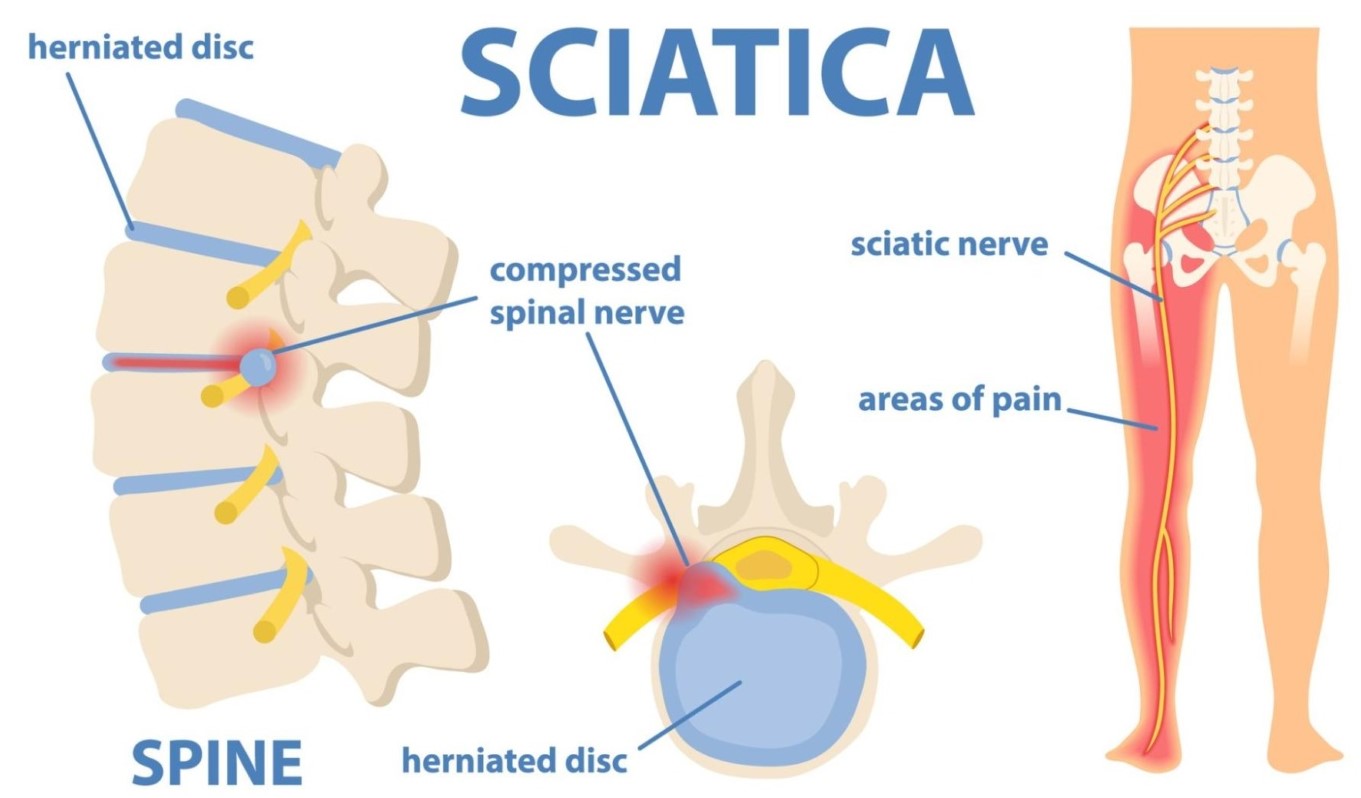Escape the agony: Discover sciatica relief in under 8 minutes
Are you tired of living in constant agony due to sciatic pain? We’ve all been there the excruciating discomfort that radiates down our leg, making even the simplest tasks feel impossible. But fear not! In this blog post, we’re going to show you how to escape the torment and discover fast relief for your sciatica relief in under 8 minutes. Say goodbye to sleepless nights and endless suffering as we delve into stretches, alternative therapies, and when it’s time to seek medical attention. Get ready to reclaim your freedom from sciatic pain.
Understanding sciatica and its causes
Sciatica is a condition that affects millions of people worldwide, causing debilitating pain along the path of the sciatic nerve. This long nerve originates in the lower back and extends down through the buttocks and legs. When this nerve becomes compressed or irritated, it can result in intense discomfort that can impact one’s quality of life.
One common cause of sciatica is a herniated disc. The discs between our vertebrae act as shock absorbers, but when they bulge or rupture, they can press on the nearby nerves, including the sciatic nerve.
Another culprit behind sciatic pain is spinal stenosis. This occurs when there is narrowing of the spinal canal due to age-related changes or conditions like arthritis. The narrowed space puts pressure on the nerves, leading to inflammation and pain.
Sometimes, muscle imbalances or tightness can contribute to sciatica symptoms. When certain muscles become overly contracted or weak, it can pull on structures around the sciatic nerve and lead to irritation.
Pregnancy also commonly triggers sciatica in women due to weight gain and hormonal changes that loosen ligaments around the pelvis. As a result, increased pressure may be placed on the sciatic nerve during pregnancy.
Injury or trauma to the back may also play a role in developing sciatica symptoms. A fall or accident that impacts your spine could cause tissue damage or misalignment which aggravates surrounding nerves.
Lifestyle factors such as excessive sitting without proper posture can strain your back and contribute to developing sciatica over time too.
Quick and effective stretches for sciatica relief
Sciatica can be a painful and debilitating condition that affects many people. The shooting pain, tingling sensation, and numbness caused by sciatica can make it difficult to carry out daily activities. Fortunately, there are quick and effective stretches that can provide relief from this agonizing condition.
1. Piriformis Stretch: The piriformis muscle is located in the buttocks and is often involved in sciatic nerve irritation. To perform this stretch, lie on your back with both legs bent. Cross one ankle over the opposite knee and gently pull the knee towards your chest until you feel a stretch in your buttocks.
2. Hamstring Stretch: Tight hamstrings can contribute to sciatic nerve irritation. Sit on the edge of a chair or bed with one leg extended straight in front of you. Keeping your back straight, lean forward at the hips until you feel a gentle stretch in the back of your thigh.
3. Child’s Pose: This yoga pose helps to release tension in the lower back and provides relief for those suffering from sciatica pain. Start by kneeling on all fours, then sit back onto your heels while reaching your arms forward on the ground as far as possible.
4.Cat-Camel Stretch: This simple exercise helps to improve flexibility and relieve pressure on the spine. Begin on all fours with hands directly under shoulders and knees under hips.
Then slowly arch your spine upward like a cat stretching its back followed by pushing belly button down toward ground keeping neck relaxed
5.Seated Spinal Twist: Sit on a chair or mat with both feet flat on floor.
Twist upper body so torso faces right side then bring left hand outside right knee place right hand behind hip. Gently twist further using core muscles hold for 30 seconds repeat other side.
Alternative therapies for managing sciatic pain
Living with sciatic pain can be incredibly debilitating, but there are alternative therapies that can help provide much-needed relief. These non-traditional approaches may not work for everyone, but they offer a natural and holistic way to manage the discomfort associated with sciatica. Here are some alternative therapies worth exploring:
1. Acupuncture: This ancient Chinese therapy involves inserting thin needles into specific points on the body to restore balance and relieve pain. Many people find acupuncture to be effective in reducing inflammation and alleviating sciatic pain.
2. Chiropractic Care: A chiropractor specializes in spinal adjustments that aim to realign the spine and reduce pressure on the nerves, including those affected by sciatica. Through gentle manipulations, chiropractic care can provide relief from both acute and chronic sciatic pain.
3. Massage Therapy: Regular massages targeted at the lower back area can help relax tense muscles surrounding the sciatic nerve, promoting circulation and reducing inflammation. Swedish massage or deep tissue massage techniques may be particularly beneficial for managing sciatica symptoms.
4. Yoga: Practicing yoga regularly can improve flexibility, strengthen muscles supporting the spine, and alleviate stress contributing to muscle tension around the affected area of your back or leg. Specific poses like child’s pose or pigeon pose have been known to relieve pressure on the nerve.
5. Heat/Cold Therapy: Applying heat packs or cold compresses directly on your lower back can provide temporary relief from radiating pain caused by an inflamed sciatic nerve. Experimenting with both heat and cold therapy will give you a sense of which works best for you personally.
6. Herbal Remedies: Certain herbs such as turmeric, ginger, devil’s claw root extract, and boswellia have anti-inflammatory properties that may aid in reducing swelling associated with sciatica relief when taken as supplements or added to teas.
Understanding when to seek medical attention for sciatic pain relief
While the stretches and alternative therapies discussed in this article can provide significant relief for sciatica, it’s important to know when it’s necessary to seek medical attention. If you experience any of the following symptoms, it is crucial to consult with a healthcare professional:
1. Severe or worsening pain: If your pain becomes unbearable or intensifies over time despite trying various home remedies, it could be an indication of a more serious underlying condition.
2. Loss of bladder or bowel control: If you notice a loss of control over urination or bowel movements along with your sciatic pain, it may suggest compression on the nerves that control these bodily functions.
3. Difficulty walking or standing: If your ability to walk or stand becomes significantly impaired due to leg weakness caused by sciatica, seeking medical attention is essential.
4. Numbness in genital area: This symptom may indicate nerve compression that requires immediate evaluation by a healthcare professional.
5. Symptoms affecting both legs: Sciatica usually affects one leg at a time; if you start experiencing symptoms in both legs simultaneously, it could signal a more severe condition such as cauda equina syndrome.
Remember, everyone’s experience with sciatica is unique, and what works for one person may not work for another. It’s always better to err on the side of caution and consult with a healthcare provider if you have any concerns about your symptoms.
By identifying these red flags and knowing when to reach out for professional assistance, you can ensure proper diagnosis and appropriate treatment options tailored specifically to your needs.







